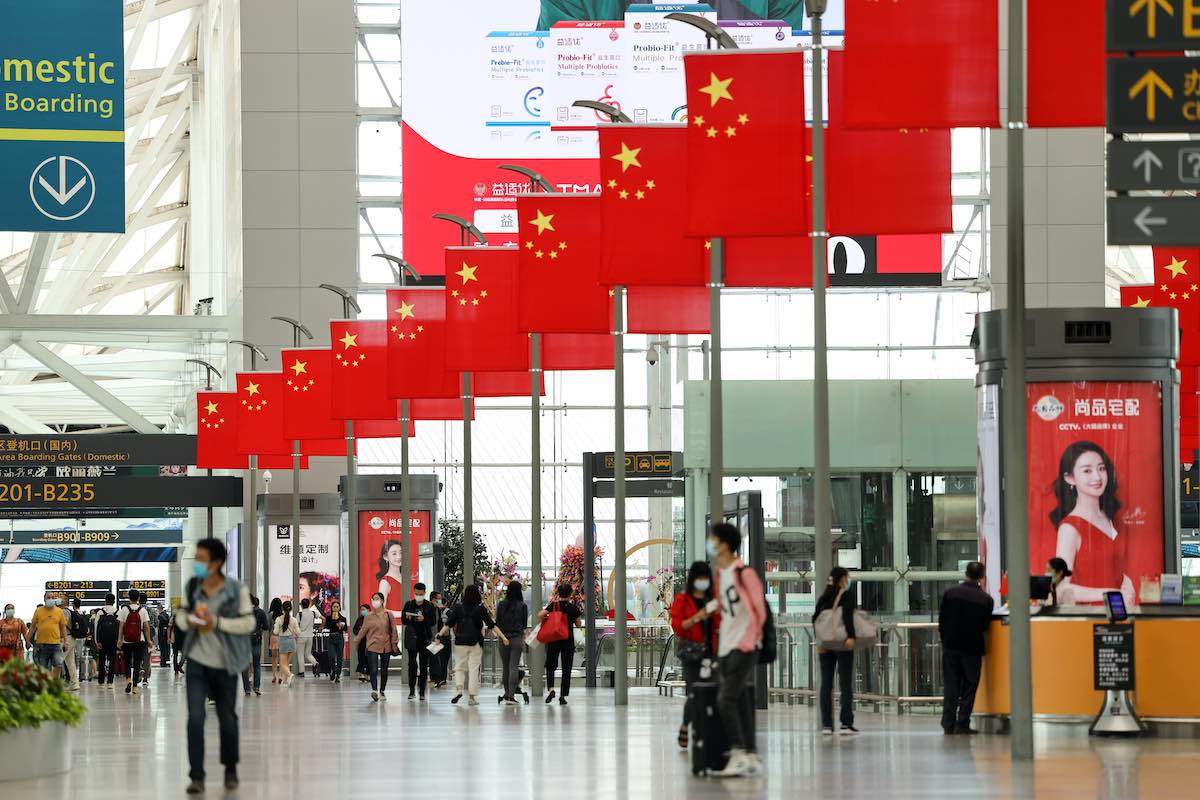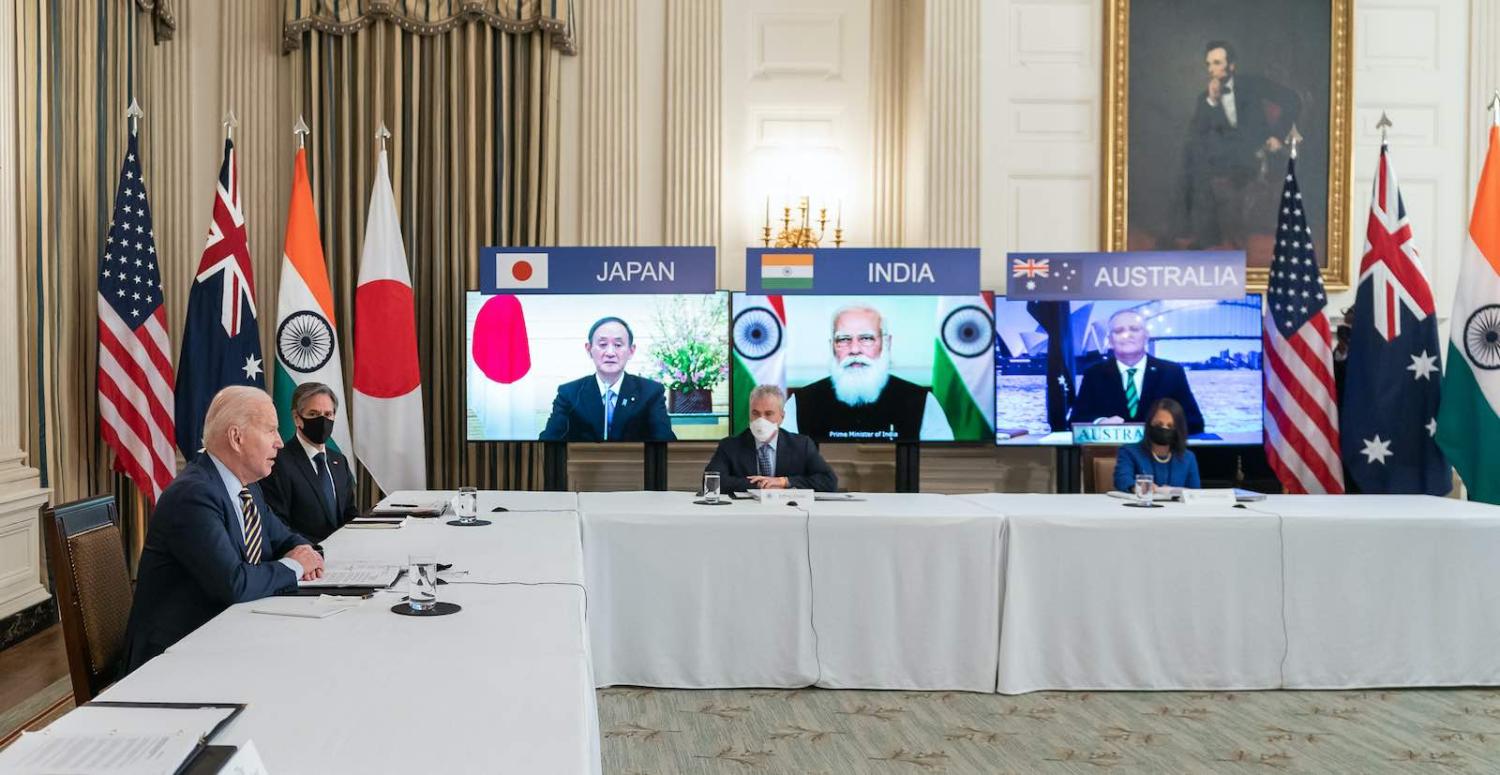On 19 March, the leaders of four important democracies of the Indo-Pacific region – the United States, Japan, Australia and India – held (virtually) their first-ever “Quad Summit.” This meeting at the leaders’ level of the Quadrilateral Security Dialogue was significant on two counts.
It showed, for one, that the extent of frustration with Chinese behaviour has reached a pitch where all four countries have overcome past reservations to deliver a potent message of solidarity. Following border clashes between Chinese and Indian soldiers in the Himalayas and export sanctions meted out as punishment by China to Australia, the new Biden administration’s determination to rally this grouping as a show of strength in the region was more easily realised than it otherwise might have been.
Perhaps more importantly, though, the Quad was finally able to show the substantive utility of the grouping in its collaborative effort to provide a badly needed global public good: more vaccines. Provided that the deal hatched for the summit is realised, the world will now be up another billion Covid-19 vaccines, based on Indian production and financial, technical and logistical assistance from the other three players.
This development probably would not have happened without this Quad summit as an “action-forcing event”, but now provides a template for possible future projects. This promising start has boosted enthusiasm on both sides of the Pacific about the Quad’s finally coming together; Australian Prime Minister Scott Morrison hailed the meeting as ushering in a “new dawn”.
It seems clear that the Quad is destined to continue as a dialogue for now, and will not take on a permanent secretariat beyond the ad hoc working groups that were established at the summit.
Before we invest in Quad challenge coins, however, it’s worth probing some of the seams of this grouping to make a realistic judgment about its future direction and sustainability. Many in the US have cheered the Quad’s powerful symbolism as a grouping of important democracies in the region. This attribute is seen as particularly important in the current moment, when the performance of democracies is being compared with perceived efficiencies or advantages of authoritarian governments, such as China, for example, in combatting Covid-19 or industrial policy. But so far, the topics discussed in the Quad grouping have little to do with governance, human rights, or strengthening democracy or the rules-based system, and few believe that like-mindedness on these issues was the decisive factor in pushing India forward at long last.
It is also not clear how, in forming an entente aimed at major-power contestation in the Indo-Pacific region, this grouping will strengthen international institutions and rules so much as go around them. It’s great, of course, that this collective spurred the production of more vaccines for the Indo-Pacific, but the international mechanism for fair vaccine distribution is the World Health Organisation’s COVAX facility and should be based on science, not geopolitical competition. Rampant vaccine nationalism and major-power fixation on milking vaccine distribution for “soft power” purposes can only erode faith in international institutions and are indicators of the continued weakening of that system, which will redound negatively to the world’s democracies, in particular.

The behind-the-scenes main impetus for the Quad, of course, is shared security concerns about China, and security cooperation seems now to be durably established. India already has bilateral or trilateral arrangements with each of the Quad countries in the military sphere, which open the way for continued training, intelligence sharing and capacity enhancement. Last year’s inclusion of Australia in the Malabar naval exercise should now provide the Quad’s security leg with a solid, annual platform.
Looking ahead from this promising kick-off, there are many factors that will determine the Quad’s future sustainability and success. It seems clear that the Quad is destined to continue as a dialogue for now, and will not take on a permanent secretariat beyond the ad hoc working groups that were established at the summit. This is to the good, as it keeps expectations modest, allows for flexibility in taking in new partners and does not compete with important regional architectures such as the Association of Southeast Asian Nations or the Indian Ocean Rim Association.
Two key factors, though, are likely to determine the Quad’s staying power above others. The first is the degree to which the Quad can forge a reputation for producing positive-sum outcomes. Without an alternate rationale for what this particular four-country grouping can do, its salient identity will be as a nakedly anti-China bloc. India in particular will be uncomfortable with this, as was demonstrated by Indian Prime Minister Narendra Modi’s insistence that that group “stand for something and not just against something”, and by the non-mention of China in the summit’s joint statement.
But if the Quad’s raison d’être is provision of public goods and mobilising synergies on global issues, not only do member countries stand to benefit, but Chinese objections will fall flat. The initial “deliverable” of a pooled investment in Indian vaccine production capacity is right on target, but following this with further outcomes on climate change and technology cooperation will likely be more difficult. If, however, the Quad can push in the laudable direction of raising India’s global engagement while expanding its marketplace and support network, the Quad brand will remain resilient in the face of future potential pressures.
Which brings us to the final point: if China continues to show its teeth and bully others, the Quad is more likely to be sustained. If, on the other hand, China demonstrates restraint, it will be harder to keep it going.

